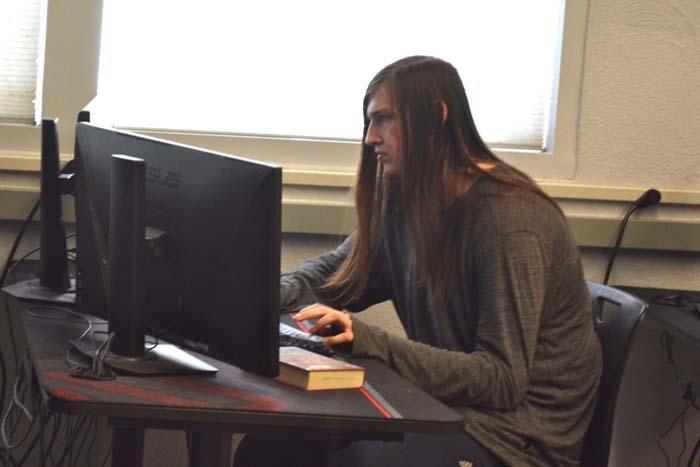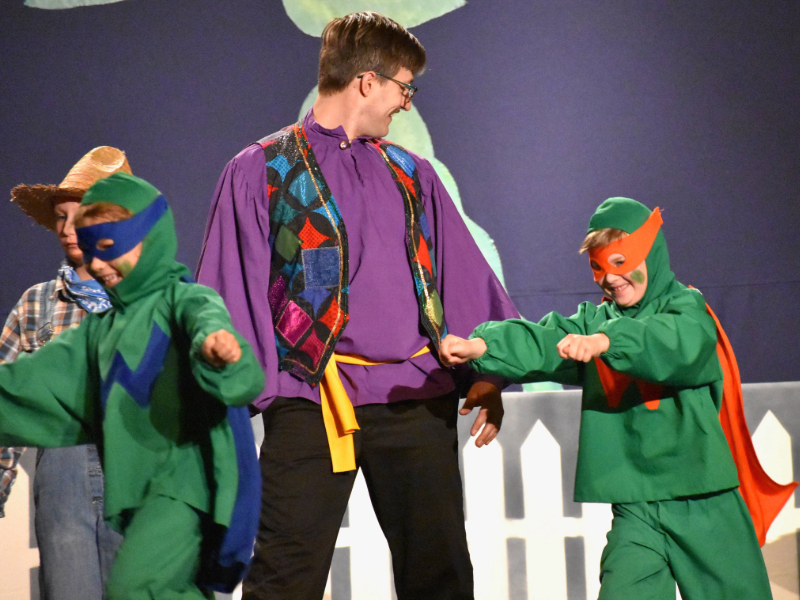Powering Up: Baker High School students preparing for digital future
Published 11:21 am Tuesday, May 7, 2024

- Baker High School student Tristan Mulkey is designing levels for a puzzle/action game under teacher Chris Wittich's supervision.
The rainbow waves of color emanating from Baker High School’s computer science lab don’t actually make the machines any faster, nor the coding more elite.
But they do make it feel cool, like splitting the difference between magic and science, and true to that promise they can create incredible things for students in the school’s Advanced Applications course.
Computer science instructor Chris Wittich says his students are honing real-world tech skills and are having a lot of fun.
When the code works, at least.
“I was a teacher first, went through and got my master’s in teaching a long time ago, and trained as a social studies teacher,” he said, adding that he didn’t find that work particularly satisfying.
Wittich then returned to Oregon State University and added a bachelor’s degree in computer science to his master’s in teaching.
“As I was wrapping that up I was substitute teaching in the district and started talking to Doug Dalton, who ran the afterschool computer science club,” Wittich said. “It fast tracked it from there. I was hired the next year and ended up creating the computer science program in BHS.”
Shifting gears
His classroom is warmed by the hum of computer fans and busy students, many building on unique projects both solo and in teams.
“First (the students take) text coding as an introductory class, then they start using graphic interface and web design, then they’ll work on doing databases on the back end. That’s kind of our first semester,” Wittich said.
His initial plan was to focus on creating smartphone apps.
But Wittich said the necessary device unlocking (for code testing) proved to be a significant issue with the school’s IT office.
Shifting gears, they’ve leaned instead into building in Unreal Engine, a C++ game development platform that’s capable of creating everything from classic pixel amusements to photo realistic and cinematic experiences.
At the first step of the design process, they learn the basics of “choose your adventure” games, which go all the way back to DOS and 5-inch floppy disks.
Soon after, though, the students choose their own projects proportionate to their skills, and developed with Wittich’s guidance.
Students explore their interests
“It’s a 2D platformer/shooter named Bad Apples,” said student Hunter Everette, as he programmed an attack feature in the form of an apple grenade. “I’m trying to think of a better name, of course, this is just an alpha version.”
Another student, James Robinson, is building a game in which the user, using a shooter, focuses on clearing an arena of floating targets. Most of his work involves node programming, bubbles of code they wire together visually until the game behaves as expected.
Tristan Mulkey is creating a puzzle game. That’s not his gaming genre of choice, but he has a talent for the puzzle and level designs.
“I don’t know how to model, so all of the characters and enemies are slimes,” Mulkey said.
Wittich doesn’t allow coding aids such as Github, Stack Exchange and ChatGPT, wanting students to learn the skills.
Wittich himself does some project work as well, with some whimsical direction from the students.
“My students are evil,” joked Wittich. “I let them roll up a bunch of genre mashups, I make a list of 10 to select from. (My current project) is a Souls-like battle-royale game.”
Wittich declined their first choice. Students would have had him building a dating simulator/survival horror game.
“I think this is the largest class ever,” said Wittich about the steady growth in student interest, now in its fourth year with 10 students this semester. Wittich says one graduate has committed to Game Design courses at Full Sail University, a Florida school that offers online courses.
Wittich said seniors have been collaborating with him to help build a digital BHS senior art museum, one they’re expanding every year with a new wing in Virtual Reality.
As yet it’s made of simple rooms with scanned photos adorning the virtual walls, gallery style. But Wittich says they’ll soon be doing some degree of photogrammetry, or 3D scanning, to be able to preserve sculptural art as well.
Currently the students get to work with Oculus Rift VR headsets for some of their more developed projects.
Moving forward, Wittich hopes they might get the tools to work with augmented reality — for example the recently launched Apple Vision Pro, which can display simulations directly on top of the visible world around us.





